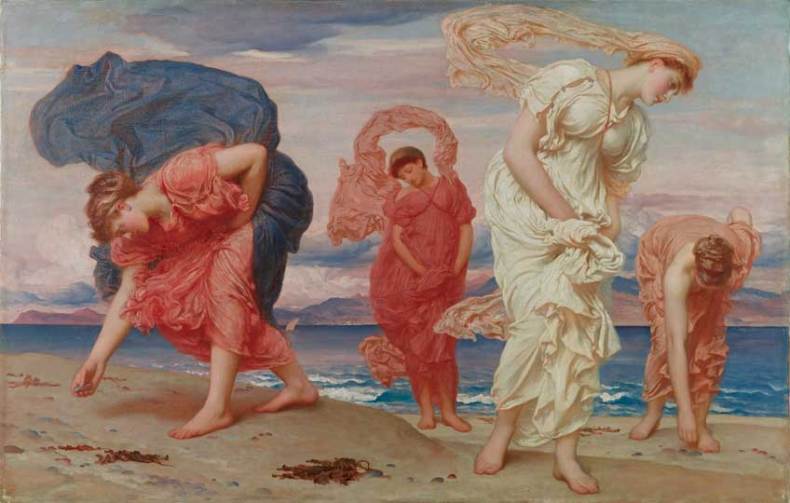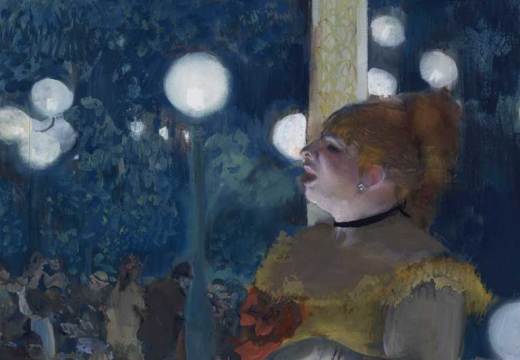‘A Victorian Obsession: The Pérez Simón Collection’ opened last week at Leighton House, and sees the return of some of the most famous paintings of the Victorian era to the house in which they were created, first hung or inspired.
Frederic Leighton was an artist, connoisseur and collector. His studio-house was designed specifically for the display of his art collection, which included works by his close friends and contemporaries, and is itself a work of art. After Leighton’s death in 1896, the majority of the collection was sold at auction. In the early 20th century a campaign was started to recreate it, and a great number of Leighton’s own artworks were acquired. Since then, the curatorial team has assembled a collection close to the one Leighton himself enjoyed, which stretches from William De Morgan pottery to Italian Renaissance masterpieces. But now, for the first time since the museum opened in 1929, all its permanent pieces (except for the contents of one room) have been cleared, and 52 works from the Pérez Simón collection have been hung in their place.
The Juan Antonio Pérez Simón collection includes some of the most prestigious artworks of the 19th century, many of which have not been on display in the UK since the 1890s. It is particularly strong on British art. For the first time, these pieces have been taken from their various private locations in Mexico to tour as an exhibition across Europe.
Daniel Robbins, curator of Leighton House, describes the exhibition as the museum’s ‘greatest project’. Not only is it a unique opportunity to see the artworks, but their display here also lets us see them in a historically appropriate interior. Robbins notes: ‘These artists – Burne-Jones, Millais, Alma-Tadema, Sargent – would have known the house. It was a studio and a gathering place; the house itself demonstrates what it was to be an artist living at this time.’
The museum staff, Robbins tells me, are particularly excited at the return of a work by Albert Moore. The nude study can be traced to Leighton’s original collection and is displayed centrally in the Silk Room, a room added to the house the year before Leighton’s death to display choice pieces of work. Also in the exhibition are six paintings by Leighton himself, four of which were painted in this house, including Greek Girls Picking up Pebbles by the Sea (1871), one of Leighton’s earliest and most striking works. Robbins points out the exotic and classical themes of these works, which are delicately mixed with contemporary features such a string quartet.

Greek girls picking up pebbles by the sea (1871), Frederic, Lord Leighton © Studio Sébert Photographes
As an artist, Leighton, like his contemporaries, strove for perfection in colour, detail and surface, admired classical antiquity and aspired towards ‘honest beauty’ in his work. This approach is apparent in the details of every room. The house is hung with silks, Turkish rugs and Byzantine tiles. In his painting studio, floor to ceiling windows let in light, and a balcony with Moroccan detailing allowed the artist to reach the top half of the canvas. He turned the house into a ‘private palace of art’.
Although the exhibition toured first in Madrid, Rome and Paris, its arrival at Leighton House has clearly been eagerly anticipated. A highlight is The Roses of Heliogabalus (1888) by Alma-Tadema, displayed in a room added to the house after its conversion to a museum. For this exhibition, the room has been filled with a rose perfume and scattered with rose petals – it’s almost an immersive experience. Displaying artworks to their best advantage in a historic house, without detracting from the house’s character, is undoubtedly a challenge. But, as Robbins explains, this was too great an opportunity to pass up. Seeing the Victorian paintings in Leighton House demonstrates the importance of an artwork’s exhibition space and, equally, the influence that art can have within an historic interior.
‘A Victorian Obsession: The Pérez Simón collection’ is at the Leighton House Museum until 29 March 2015.

















![Masterpiece [Re]discovery 2022. Photo: Ben Fisher Photography, courtesy of Masterpiece London](http://zephr.apollo-magazine.com/wp-content/uploads/2022/07/MPL2022_4263.jpg)
‘Like landscape, his objects seem to breathe’: Gordon Baldwin (1932–2025)